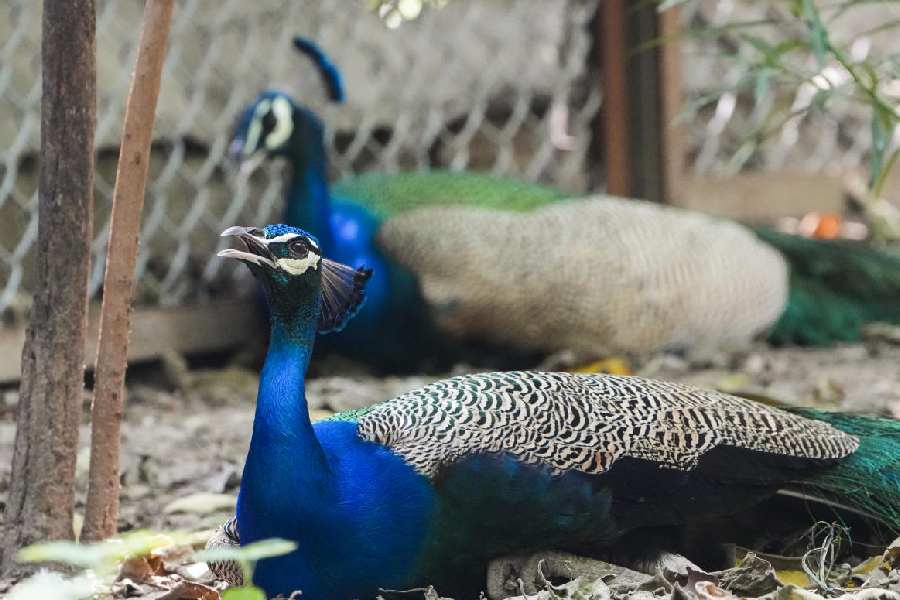 |
| A tiger at rest in a sanctuary |
Miao (Arunachal Pradesh), Oct. 17: Shaken by the disappearance of big cats from Sariska, officials of Namdapha National Park, which is also a tiger reserve, have decided to adopt a four-pronged tiger estimation programme to assess the population of the beasts within the park.
Speaking to The Telegraph, field director L.K. Pait said the programme, scheduled to begin in the latter half of December, will involve experts from across the country.
?The entire programme will be clustered into four parts. First, obviously, will be the estimation of tigers. Next we will be analysing the position of co-predator species like leopards and wild dogs. Third will be an assessment of animals of prey and finally their habitat. The entire programme will be conducted under the strict vigil of the Wildlife Institute of India and the directorate of Project Tiger,? Pait said.
Namdapha, which was declared a tiger reserve in 1983, has the rare distinction of being home to all the four big cats ? the tiger, leopard, snow leopard and clouded leopard. However, a section of wildlife activists is now raising doubts about the existence of these species in the park.
The field director however, argues: ?We are aware about these assumptions and doubts from various quarters from time to time. This is because like in Ranthambhor, people do not come across a tiger every now and then, owing to the diverse types of vegetation. In Namdapha, we have seven different types of forests, beginning from wet evergreen to alpine scrub. Moreover, there is altitudinal variation ranging from 200 metres mean sea level to 4,500 metres. This is why it will be incorrect to reach conclusions based on assumptions?.
The programme is likely to be completed by January, 2006.
?The prime objective of this programme will be to not only collect data on the big cats, but also gather details on the figures of their prey animals and habitats. All these are inter-linked,? Pait said.
The parties which will be involved in the programme, will be given specialised training by reputed tiger experts of the country.
The park, which is located between Myanmar on its eastern and southern boundary in Patkai Hills and the Eastern Himalayan foothills on the west, has a total geographical area of 1985.24 square km. This includes a buffer zone of 117 square km.
Official records show that the tiger and leopard population was 52 and 35 respectively in 1995, which was put at 61 and 70 in the 2001 census.
One of the problems of the park, the main entrance to which starts from this sleepy township in Changlang district, is its inaccessibility to the core region.
?Due to lack of proper infrastructure like roads, almost 80 per cent of the park rema-ins inaccessible to us. Also, there is also acute shortage of manpower. The authorities need to look into this aspect without further delay,? a senior forest official said.
Wildlife activists Rishi Das and Ranjan Kumar Das, both lecturers at Tinsukia College, believe infrastructure is the major hurdle in the development of the reserve.
?The park, since it was declared a tiger reserve, has not got the attention it deserves. Otherwise, with the treasure trove of flora and fauna it has, it could have been a major international spot for eco-tourism,? Rishi, who is also the honorary wildlife warden of Tinsukia, said.
Namdapha is the 15th tiger reserve of the 28 reserves in the country. It is also a part of the world?s 12th biodiversity hotspot.










